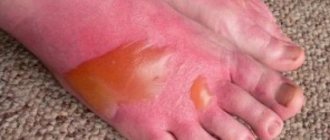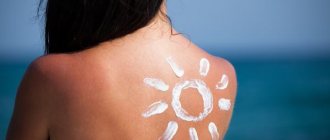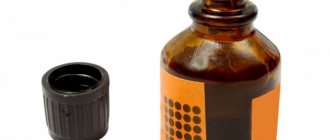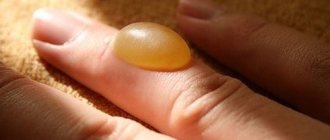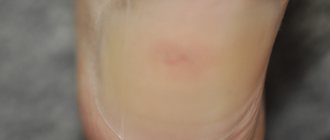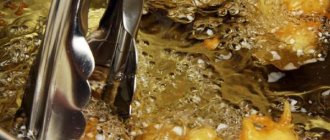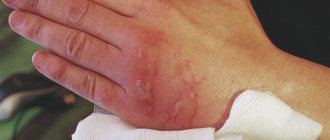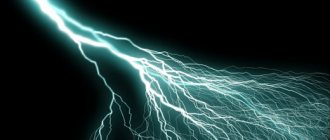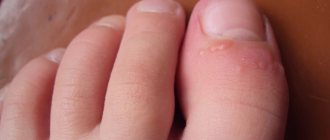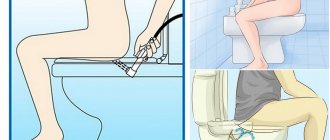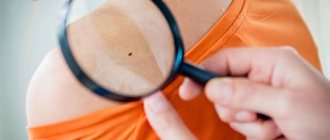- Burn severity and types
- First aid
- Treatment
- Alkali burn to eyes
Alkali burns are among the most dangerous types of injury. Under the influence of a dangerous reagent on the skin or other part of the human body, severe trauma to the superficial skin tissue or mucous membrane occurs, after which the alkali penetrates deep into the skin and continues to act aggressively on the fiber.
Alkali burns are classified as household and work injuries. As a rule, when a household injury occurs, burns do not pose a serious threat to the victim, since in household use exposure to a harmful reagent occurs in acceptable concentrations. If an injury occurs at work, alkali burns can have quite negative consequences for the victim. As a rule, enterprises and factories use very concentrated and toxic substances during their work, which can cause serious injury to a person when interacting with them. The patient’s future health and life depend on the timely provision of primary care. It is important to remember that it is known for its complications, including infection and the development of suppuration at the site of injury.
When can you treat burns at home?
Treatment of burn wounds at home is only possible if the injury meets several criteria:
- the burn is of the first or second degree of severity;
- the necessary sterile preparations and medicines are at hand;
- the affected area is not on the face, hand, foot or genitals;
- the burn area does not exceed the size of the palm;
- the patient does not experience any disturbances in the general condition of the body (headaches, fever, nausea).
If the burn wound meets the criteria of the 3rd or 4th degree of severity, or a child is injured, it is necessary to consult a traumatologist. Even if an adult has been injured, the help of a specialist will not be superfluous - in a medical institution you can get advice on treating wounds at home.
At home, only first and second degree burns can be treated, and more severe injuries must be shown to a medical specialist, as complications are possible.
Peculiarities
Most often, burns from acids and alkalis occur in industrial work conditions or in the household. Injury received at home, as a rule, does not cause serious harm to health due to lower concentrations of reagents. Being injured in the workplace often has serious consequences, including death. Since high concentrations of toxic components are used in production, they cause severe burns upon contact. The use of such substances requires increased attention and compliance with safety precautions.
First aid at home
First of all, the victim must be removed from the fire : put out the flame, remove burnt or scalded clothing, trying to injure the affected area of the body as little as possible. The burn must be kept under running cold water for 10-20 minutes to reduce the temperature of the damaged surface and prevent the damaging factor from spreading.
Note. In order to somehow “calm down” a burn from chemicals at home, the injury is washed with a solution of soda (if affected by acid) or citric acid (if exposed to alkali).
The victim needs to restore water balance. When treating burns at home, it is allowed to give the patient drinks such as:
- tea;
- coffee;
- alkaline mineral water;
- dehydration solution (add 1 teaspoon of soda and 1 teaspoon of salt per liter of water).
As a painkiller, it is recommended to take Analgin, Aspirin or drugs containing diphenhydramine.
Damage to the organs of vision
Rarely, but still there are cases of eye burns from alkali. In this situation, it is urgent to call an ambulance. This type of lesion has the following features:
- lacrimation;
- acute reaction to light;
- pain in the eye;
- not only the eyeball is affected, but also the area around it;
- in severe cases, complete or partial loss of vision is possible.
While waiting for emergency help, the mucous membrane of the eye should be thoroughly rinsed:
- The eyelid of the injured eye is pulled back and carefully washed with a thin stream of cool water for 20 minutes.
- The patient is taken to a specialist.
How to treat a burn: medicines and folk remedies
When choosing medications at home that help with burns, it is necessary to exclude fatty ointments and other products containing fat - they do not allow the wound to “breathe”.
Important. For bandages applied to the injured area, fabric-based products are used. Under no circumstances should you use cotton wool!
Before smearing a burn wound at home, you need to make sure you have a sterile bandage or gauze - an unprotected wound can easily get infected
You can use medications from your home medicine cabinet such as:
- ointment "Mefenat";
- gel "Actovegin";
- aerosol "Panthenol";
- "Levomekol";
- "Levosin".
On a note. For burns at home, preparations containing silver are often used - Dermazin or Argosulfan. They have strong anti-infective properties. The edges of the wound can be treated with a solution of brilliant green to prevent infection.
In folk medicine, there are quite a few remedies for burns that can be used at home. So, when providing first aid, the affected area can be lubricated with toothpaste - it has pain-relieving properties and prevents the appearance of blisters .
When treating, you can use vegetables and fruits on hand. One of the most common means for compresses is grated raw potatoes, which are wrapped in gauze and applied to the affected area.
When treating burns, it is strictly forbidden to open blisters - this can lead to wound contamination and the development of infections.
Damage Level
The severity of the burn you receive depends on the following factors:
- composition, volume and concentration of alkali;
- duration of contact.
Alkali damage is divided as follows:
- I degree. Only the top layer of skin is injured. Symptoms of a first-degree alkali burn include: mild swelling, redness, burning, and moderate pain.
- II degree. Small blisters with watery contents form on the skin. The burn affects the deeper layers of the dermis, otherwise the symptoms are similar to the previous ones.
- III degree. Very often the subcutaneous fat layer is injured. The active substance penetrates into the deeper layers, which is why the pain is felt more acutely. Large watery blisters appear on the surface of the dermis, less often with bloody spots.
- IV degree. The most dangerous type of alkali burn. It affects not only the skin, but also muscles, tendons, bone and fat tissue. This degree of injury poses a great threat to the life and health of the victim. Treatment is done through surgery to remove dead tissue and a chemical.
What foods will help with a burn?
The following products are also used in treatment:
- cabbage (a cold leaf of the vegetable is applied to the burn and held until it warms up, after which it is changed or kept in cold water until it cools);
- pumpkin, carrots (raw products are grated and applied to burned areas);
- the burn site can be sprinkled with ground dry pomegranate peel, after which the wound becomes covered with a crust and healing begins;
- the affected area is sometimes covered with a mixture of egg white and sauerkraut or cabbage itself;
- juice from fresh dill is diluted with chilled water in a ratio of one to two, and lotions are made.
For better recovery, you need to eat certain foods that promote skin regeneration - lean beef, figs, onions, garlic, radishes, cabbage, almonds.
Cabbage leaf can be used immediately after a burn - it cools the skin and soothes it.
Note. During the recovery process, it is necessary to carefully monitor the patient's health. At the slightest suspicion of its deterioration, you should contact a medical facility.
Diagnostics
First of all, assessing a burn involves examining the affected area; the larger its area, the more serious the problem. As a rule, the severity is determined on the third day after injury.
For most patients, the diagnosis of alkali burn is associated with damage to the outer skin. The doctor is aware of the likely severity of the injury and its consequences. He tries to prevent all possible complications, such as wound infection, sepsis, intoxication, etc. In case of existing pathologies, a specialist will help to take timely measures and prescribe treatment. Because the chemical tends to penetrate tissue, this type of burn is considered severe.
Some types of alkali, in addition to external influences, penetrate into the blood and increase the natural pH level, which leads to the development of pathological processes in the heart and kidneys. If we talk about eye burns, diagnosis is carried out using special tools and equipment, after which the ophthalmologist prescribes therapy.
How to cure a burn with medicinal plants
Traditional medicine has many means to eliminate the consequences of burn wounds.
- Peeled and grated to a pulp, an aloe leaf is applied directly to the site of injury. The treated wound is wrapped in gauze.
- A decoction is prepared from two parts of oak bark and ten parts of water. The cooled product is used to prepare compresses, lotions, and for washing wounds. A decoction of linden flowers is also used (only it is prepared in a ratio of 1:10).
- An ointment is prepared based on tincture of calendula and petroleum jelly: the components are mixed in a ratio of 1:2, respectively. Apply the resulting mixture to the burn.
Prevention, prognosis
For preventive purposes, when working with alkalis, it is important to follow safety precautions, protect your hands with gloves, your eyes with special glasses, and your body with closed clothing.
The prognosis for rehabilitation mainly depends on the degree of the burn. Mild lesions usually heal fairly quickly with proper treatment. Severe alkali burns require longer therapy. Scars and pigment spots remain on the body, and joint mobility in the affected areas may be limited.
The article discusses the types of alkali lesions and describes the degrees of severity. Also described are actions to provide first aid to the victim, medications for treatment, traditional methods and recipes.
Folk remedies for burns on the face
Important. It is strictly not recommended to independently treat facial burns resulting from exposure to fire, boiling water or aggressive chemicals.
Aloe juice is the most popular medicine for treating burns on the face. Using products based on it, special lotions and compresses are made.
Often, especially on hot sunny days, burns appear on the skin of the face. To eliminate them, you can use traditional medicine, which is easy to prepare yourself. The most popular are:
- Special lotions are made with cotton swabs soaked in aloe juice. The drug is used 2-3 times a day, usually for no more than a week.
- A teaspoon of propolis is mixed with three tablespoons of water. Soak a cotton pad in the resulting solution and apply it to the affected area for 10-15 minutes.
- Essential oil from rose petals is mixed with vitamin E. This mixture should be rubbed into the damaged area of the skin two to three times a day.
- It is recommended to apply a honey mask to the face for 15-20 minutes three to four times a day, after which the product is washed off with cold water. To prepare the drug, use a teaspoon of honey and vegetable oil, as well as an egg yolk. The ingredients are thoroughly mixed until a homogeneous mass is formed.
Honey mask is used not only to treat burns on the face, but also as an effective cosmetic skin care product
Signs of injury
In case of a chemical burn with alkali, a feeling of soap deposits immediately appears at the site of the injury. This is due to the emulsification of sebum on the surface of the epidermis. Redness and irritation of the skin exposed to the chemical occurs almost instantly.
The longer the effect of the reagent on the skin, the more pronounced the symptoms of the burn. Swelling, burning sensation, numbness and sharp pain appear. It is worth noting that alkali can diffuse into tissues; as a result, the pathological process occurs in the subcutaneous layers and damage is not immediately detected on the surface.
Preventive measures
It is not difficult to prevent concrete from getting on your skin or eyes. To do this, you just need to use simple protective measures when working with concrete:
- Clothing must be made of thick fabric and completely cover the body;
- Feet should be protected with high boots made of thick rubber;
- Hands must be wearing long gloves made of thick rubber or special rubberized fabric;
- Eyes must be protected with goggles or special goggles with side walls;
- If contact with cement dust is likely, a protective respirator mask must be worn.
We must not forget that concrete is not as harmless as it seems at first glance.
Burns from it are sometimes severe, take a long time to heal and are not always successful. But existing preventive measures are 100% effective.
Treatment
Drug therapy is selected depending on the stage, degree of injury, location on the body and its size. Therapy includes the following manipulations:
- Pain relief for severe pain. It is necessary to use analgesics such as Ibuprofen, Nise, Nurofen;
- Anti-infective therapy involves taking antibiotics. Solutions of Novoimanin and Dioxyzol are suitable for this;
- Treatment must be carried out with such agents as Levomekol and Levosin;
- In more severe stages of the burn, it is necessary to open the blisters (this procedure is performed by a doctor) and treat the wound with antiseptics;
- For stage 4 burns, surgery is performed to remove all dead tissue. To eliminate defects, plastic surgery is necessary.
When an injury occurs, a person usually does not understand what is happening and becomes lost. It is difficult for him to concentrate and understand what to do. But in this case it is important to be able to control yourself and calm down. It is important to remember that the further condition of the victim depends on the correct provision of first aid.
